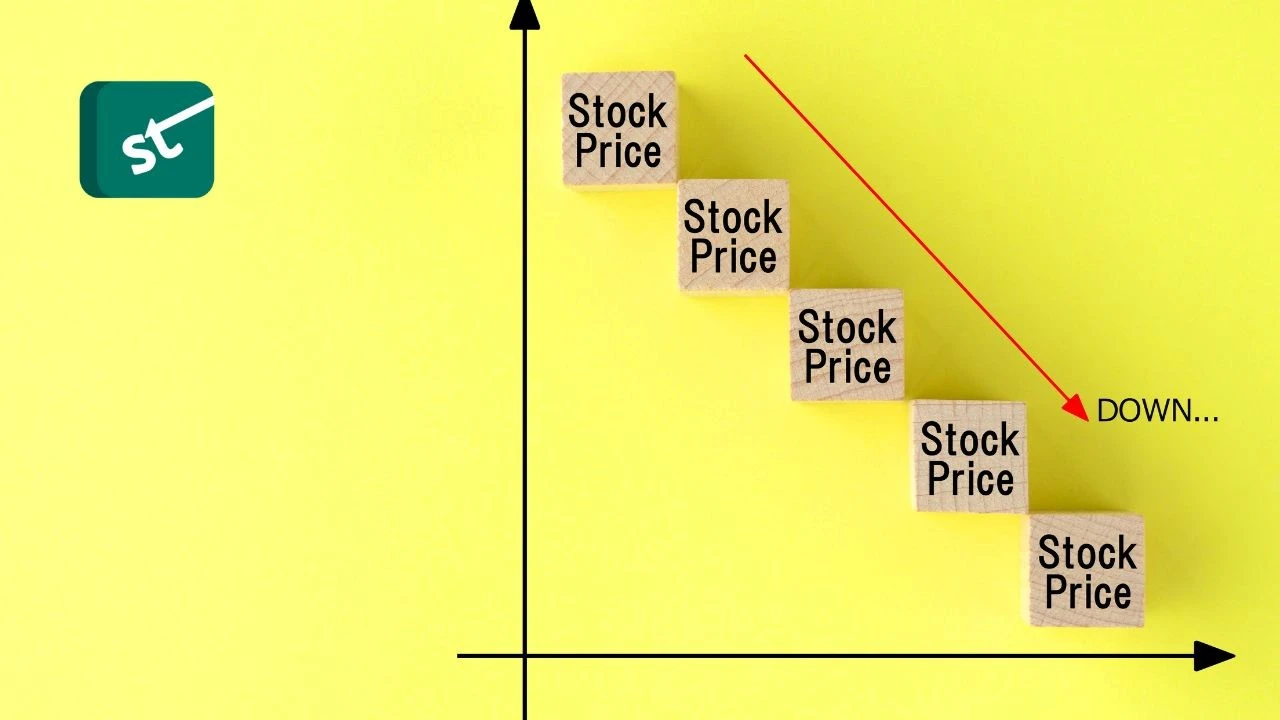The opening bell of the U.S. stock market, a global financial juggernaut, brings with it anticipation and opportunity, dictating the tone of the trading day.
Nestled in the Pacific Time Zone, this pivotal moment occurs at a distinctive juncture, shaping investor strategies worldwide.
As the sun rises over the Pacific, markets open in unison with this dynamic region, setting the stage for a day of financial flux and fortune.
In this article, we delve into the significance and nuances of US stock market hours Pacific Time, shedding light on its impact, implications, and the rhythms of global finance.
The Global Epicenter of Investment: US Stock Markets
The US stock markets represent more than just a financial center.
They are a crucial driver of global investment strategies, offering diversification, insight, and a pathway to capital that reverberates throughout the international financial landscape.
Global investors continue to recognize the enduring significance of these markets in their pursuit of wealth creation and financial security.
-
Unrivaled Liquidity and Depth
The significance of US stock markets for global investors cannot be overstated.
These markets, primarily represented by the New York Stock Exchange (NYSE) and NASDAQ, hold a preeminent position in the world of finance.
Their unrivaled liquidity and depth provide a unique value proposition for investors worldwide.
-
Global Investment Portfolio Diversification
US stock markets offer a vast array of investment opportunities across various sectors and industries.
This diversity allows global investors to effectively diversify their portfolios, reducing risk and enhancing returns.
Access to a broad range of American companies, from tech giants like Apple to traditional stalwarts like Johnson & Johnson, empowers investors to balance their holdings strategically.
-
Influence on Global Economic Sentiment
The performance of US stock markets often serves as a barometer for global economic sentiment.
Events and trends in these markets can impact investor confidence and influence investment decisions worldwide.
A robust American economy generally translates to a positive ripple effect on international markets.
-
Innovation and Technological Advancements
The US stock markets have historically been at the forefront of innovation and technological advancements.
Companies listed here often pioneer groundbreaking technologies and business models.
This makes them attractive investments for those seeking exposure to cutting-edge industries like artificial intelligence, biotechnology, and renewable energy.

-
Gateway To Capital
For international businesses, listing on US stock exchanges can be a gateway to accessing global capital.
The prestige and visibility associated with being listed in the US can attract a broad base of investors, fostering growth and expansion opportunities for companies beyond their domestic borders.
Overview of US Stock Markets
The United States boasts a robust financial landscape comprising three major stock exchanges, each with its unique characteristics and attributes.
These exchanges serve as epicenters for trading in equities and securities, facilitating the capital allocation that fuels the American economy.
-
New York Stock Exchange (NYSE)
The NYSE, founded in 1792, is one of the world’s oldest and most prestigious stock exchanges.
It primarily deals with traditional, established companies, often referred to as “blue-chip” stocks.
The NYSE is known for its iconic trading floor on Wall Street, where brokers physically engage in trading activities.
-
NASDAQ
NASDAQ, established in 1971, stands out for its electronic trading platform.
It specializes in technology and internet-related companies, making it a hub for innovation and growth stocks.
NASDAQ is renowned for its high-speed, digital trading environment.
-
American Stock Exchange (AMEX)
AMEX, now known as NYSE American, primarily caters to small and mid-cap companies.
It has a reputation for flexibility and accommodating listings that might not meet the stringent requirements of the NYSE.
-
Market Hours
The trading hours for these exchanges in Eastern Time (ET) and Pacific Time (PT) are as follows:
Exchange Eastern Time (ET) Pacific Time (PT) NYSE Opening: 9:30 AM ET Opening: 6:30 AM PT Closing: 4:00 PM ET Closing: 1:00 PM PT NASDAQ Opening: 9:30 AM ET Opening: 6:30 AM PT Closing: 4:00 PM ET Closing: 1:00 PM PT AMEX Opening: 9:30 AM ET Opening: 6:30 AM PT Closing: 4:00 PM ET Closing: 1:00 PM PT -
Seasonal Variations and Holidays
While the regular trading hours remain consistent throughout the year, the US stock markets observe certain holidays when they are closed.
These include New Year’s Day, Independence Day, Thanksgiving Day, and Christmas Day.
Additionally, the markets may have shortened trading sessions on days like Christmas Eve and New Year’s Eve.
Why Knowing Market Opening Hours Matters
Market opening times serve as pivotal moments in the financial landscape, shaping trading strategies, and influencing investment outcomes.
Traders and investors must carefully consider these temporal dynamics in their pursuit of financial success.
-
Market Dynamics and Timing
The opening times of financial markets hold immense significance for traders and investors alike.
These moments mark the commencement of a daily financial symphony, dictating trading rhythms, and influencing investment decisions.
-
Global Synchronization
Market openings are not confined to a single geographical location; they ripple across time zones, creating a global tapestry of opportunities.
The interconnectedness of markets ensures that news and events from one part of the world can reverberate throughout others, impacting asset prices.
-
Volatility and Liquidity
The initial hours of market activity often witness heightened volatility and increased liquidity.
Traders capitalize on this window to execute strategic trades, while investors may seek to enter or exit positions with minimal price slippage.

-
Information Flow
Market openings coincide with the release of economic data and corporate earnings reports.
This alignment allows participants to digest critical information promptly, aiding in more informed decision-making.
Navigating Time Zones: The Crucial Consideration For West Coast Investors
The time zone disparities present both opportunities and challenges for West Coast investors trading in US stock markets.
A strategic approach towards US stock market hours Pacific Time, combining early starts and after market trading, can help them make the most of their investments despite the temporal differences.
-
Temporal Challenges
For West Coast investors looking to trade in US stock markets, the impact of time zone differences cannot be overstated.
The three-hour time gap between the Pacific Time Zone (PT) and Eastern Time Zone (ET) significantly influences their trading experience.
-
Early Start, Tactical Advantage
The West Coast investor faces the challenge of commencing trading activities as early as 6:30 AM PT, corresponding to the opening bell on Wall Street at 9:30 AM ET.
This early start provides a tactical advantage in assessing pre-market data, corporate news, and market sentiment.
-
Mid-Day Lull
However, as the trading day progresses, the time zone difference becomes a double-edged sword.
The mid-day period often overlaps with West Coast investors’ lunchtime, potentially leading to missed trading opportunities and reduced focus.
-
Extended After-Hours Trading
To counter these challenges navigating US stock market hours Pacific Time, West Coast investors can leverage extended after-hours trading.
This extension allows them to react to late-breaking news and earnings reports, evening the playing field with their East Coast counterparts.
Common Trading Strategies
In the intricate realm of US stock markets, traders employ various strategies to navigate the volatile terrain.
These strategies are essential to capitalize on opportunities while managing risks. Two commonly used approaches include “Day Trading” and “Long-Term Investing.”
-
Day Trading
This strategy involves buying and selling stocks within the same trading day to profit from short-term price fluctuations.
Day traders often scrutinize pre-market and early morning trading sessions, taking advantage of news catalysts and rapid price movements.
The morning bell’s opening rush can be a make-or-break moment, setting the tone for the rest of the day.
-
Long-Term Investing
Conversely, long-term investors adopt a patient approach, focusing on the fundamentals of companies rather than daily market fluctuations.
While market opening times are less critical for long-term investors, they can still influence entry and exit points, especially when earnings report or significant news emerge during pre-market hours.

In both strategies, understanding and adapting to the unique dynamics of market opening times is essential for success in US stock markets.
Pacific Time Investors: Strategies For Morning Trading
Pacific Time investors possess a unique edge in the financial markets, thanks to their strategic positioning amidst global trading sessions.
By capitalizing on the morning trading window, which overlaps with both Asian and European markets, astute investors can optimize their strategies for enhanced profitability.
-
Early Risers’ Advantage
Rising before the East Coast traders, Pacific Time investors can exploit market inefficiencies resulting from overnight developments.
Quick reactions to global news and economic data releases can lead to substantial gains.
-
Volatility Play
Leveraging the heightened volatility at market open, Pacific Time investors can engage in short-term trading, benefiting from rapid price fluctuations.
Implementing tight stop-loss orders and setting clear profit targets is essential for risk management.
-
Sector Analysis
Mornings provide an ideal timeframe for sector-specific analysis. Identifying sectors showing early strength or weakness can guide investment decisions for the day ahead.
-
Earnings Season Focus
During earnings seasons, mornings offer a prime opportunity to capitalize on earnings reports and conference calls, providing valuable insights into a company’s financial health and future prospects.
-
Technical Analysis
Utilizing technical indicators such as moving averages, MACD, and RSI can help Pacific Time investors make informed trading decisions based on market trends and momentum.
Pacific Time Investors: Strategies for Afternoon Trading
Investors operating in the US stock market hours Pacific Time zone face distinct challenges and opportunities when it comes to afternoon trading.
This region’s unique position allows investors to capitalize on both domestic and global market movements.
Here are some strategies tailored to Pacific Time investors seeking to make the most of their afternoon trading sessions.
-
Leveraging Global Markets
In the afternoon, the Pacific Time Zone coincides with the opening of Asian markets and the ongoing trading in European markets.
Investors can capitalize on these overlaps by monitoring global economic news and adjusting their portfolios accordingly.
-
Volatility Awareness
Afternoons often witness increased market volatility due to news releases and trading activity.
Pacific Time investors should stay vigilant, set stop-loss orders, and diversify their holdings to mitigate risks.
-
Swing Trading
Consider employing swing trading strategies during the afternoon session.
Identify stocks with strong trends and look for entry and exit points that align with the day’s price movements.
-
Sector Focus
Pay attention to specific sectors that tend to perform well in the afternoon.
Technology, healthcare, and consumer goods often exhibit afternoon strength, driven by earnings releases and news developments.
-
Risk Management
Maintaining a well-defined risk management strategy is crucial. Allocate your capital wisely, use trailing stops, and stay disciplined to protect your investments.
A Comparison with Other Time Zones
-
Advantages of Pacific Time Over Australian Time Zone
The US stock market operating on Pacific Time offers several advantages over the US stock market opening hours Australia.
Firstly, Pacific Time aligns with major global financial hubs, allowing for smoother cross-border transactions and international collaboration.

Secondly, it accommodates broader time zone coverage, enabling investors from Asia to Europe to participate during reasonable hours.
Additionally, the extended afternoon trading session provides flexibility for traders to react to breaking news and market events.
This longer window fosters deeper liquidity and increased trading opportunities.
In contrast, the US stock market opening hours Australia may limit international engagement and hinder timely response to global economic developments.
-
Advantages Of Pacific Time Over UK Time
The US stock market’s operating hours in Pacific Time offer distinct advantages compared to the US stock market opening UK time.
The US market opens at 6:30 a.m. Pacific Time, allows investors to react swiftly to global developments and news, which is particularly beneficial for international traders.
Additionally, the extended trading hours provide greater flexibility, enabling investors to adjust their portfolios outside regular business hours.
Furthermore, the Pacific Time zone aligns with the end of the Asian trading session, creating a seamless transition for traders, fostering liquidity, and enhancing opportunities.
In summary, the US stock market’s Pacific Time opening hours offer enhanced accessibility and adaptability for a global investor community as compared to the US stock market opening UK time.
Navigating Risk in US Stock Markets: A Pacific Time Investor’s Perspective
Trading in US stock markets by Pacific Time investors offers substantial opportunities but requires a nuanced approach to manage the associated risks effectively.
These risks come with unique challenges due to the time zone difference. Understanding and managing these factors are crucial for successful trading.
-
Time Zone Challenges
Pacific Time investors face the challenge of starting their trading day hours after the Eastern Time markets open.
This lag can result in missed market-moving events and delayed reactions to the news, potentially impacting trade outcomes.
-
Volatility and Market Timing
US stock markets are known for their volatility. Pacific Time investors must be mindful of price fluctuations, especially during the opening hours when trading activity is highest.
Making informed decisions and setting limit orders can mitigate risks associated with sudden price swings.
-
Currency and Exchange Rate Risks
For international investors, currency fluctuations can significantly impact returns.
Pacific Time investors should closely monitor exchange rates and consider hedging strategies to protect their investments.
-
Regulatory Compliance
Compliance with US trading regulations is essential. Pacific Time investors must adhere to SEC rules and stay updated on any changes that may affect their trading strategies.
-
Diversification and Risk Management
Diversifying one’s portfolio across various sectors and asset classes can help mitigate risks.
Additionally, employing risk management techniques such as stop-loss orders and proper position sizing is crucial.
Conclusion
The opening of US stock market hours Pacific Time presents a pivotal moment for global investors.
As the sun rises on the West Coast, opportunities abound for traders worldwide, fostering a dynamic and interconnected financial landscape.
This unique time zone juxtaposes tradition with innovation, bridging the gap between historical trading hours and the ever-evolving world of digital finance.
It is a reminder that in the realm of investments, time is not merely a measurement, but a catalyst for wealth creation and economic progress.
So, whether you’re an early riser or a night owl, the Pacific Time opening signifies the promise of a new trading day.
FAQs
Is It Better to Buy Stock After-Hours?
Buying stocks after-hours carries higher risks due to increased volatility and limited liquidity, so it’s important to exercise caution and have a clear strategy before trading in this period.
What Is the Best Time Frame to Look at Stocks?
The best time frame to assess stocks depends on your investment goals; long-term investors focus on years, while day traders may look at minutes or hours.
When Is Market After Hours?
Market after hours refers to trading that happens after the regular stock market hours, typically from 4:00 PM to 8:00 PM Eastern Time.
What Time Do US Stock Markets Open in Pacific Time (PT)?
The US stock markets open in Pacific Time (PT) at 6:30 AM, providing ample opportunities for West Coast investors.
What Time Do US Stock Markets Close In Pacific Time (PT)?
The U.S. stock markets typically conclude their trading day in Pacific Time (PT) at 1:00 PM.
This pivotal moment marks the end of financial transactions on the West Coast, influencing global market sentiment.
Are There Any Differences In Market Opening Hours For Different Stock Exchanges?
Stock exchanges around the world operate on distinct schedules due to time zone variations and regulatory differences.
These variations in market opening hours enable continuous global trading, fostering diverse investment opportunities.
Do US Stock Markets Observe Any Holidays That Affect Their Opening Hours?
The US stock markets do observe several holidays, such as Thanksgiving and Christmas, when they remain closed.
These holidays can affect their regular opening hours and trading schedules.
Why Is It Important For West Coast Investors To Know US Market Opening Hours?
Understanding US market opening hours is crucial for West Coast investors because it ensures timely decision-making and maximizes trading opportunities.
Aligning with Eastern Time helps grasp global economic shifts efficiently, fostering investment success.
Can I Trade Stocks Before the Official Market Opening Time?
Engaging in pre-market stock trading prior to the official market opening requires access to specialized platforms and compliance with established regulations.
Such early trading offers opportunities and risks distinct from standard market hours.
How Can I Convert Eastern Time (ET) To Pacific Time (PT) To Calculate Market Hours?
To accurately calculate market hours when converting Eastern Time (ET) to Pacific Time (PT), subtract 3 hours.
This adjustment ensures precise coordination between the two time zones for efficient trading analysis.
Are There Any Advantages To Trading During The First Hour After Market Open?
Trading during the initial market hour offers the advantage of heightened volatility and potential for quick gains, yet carries increased risk.
Early news reactions and fresh liquidity make it an appealing window for active traders.
What Is The Importance of The Closing Bell In Stock Trading?
The closing bell in stock trading serves as a crucial punctuation mark, signaling the end of the trading day. It facilitates price discovery, finalizes trades, and provides a reference point for investors and analysts to assess daily market performance.
Is It Necessary To Be Online When The Market Opens To Trade Stocks?
While it’s beneficial to monitor stock markets at opening for immediate opportunities, being online is not mandatory.
Pre-market analysis and limit orders allow participation without real-time presence, ensuring prudent trading decisions.











